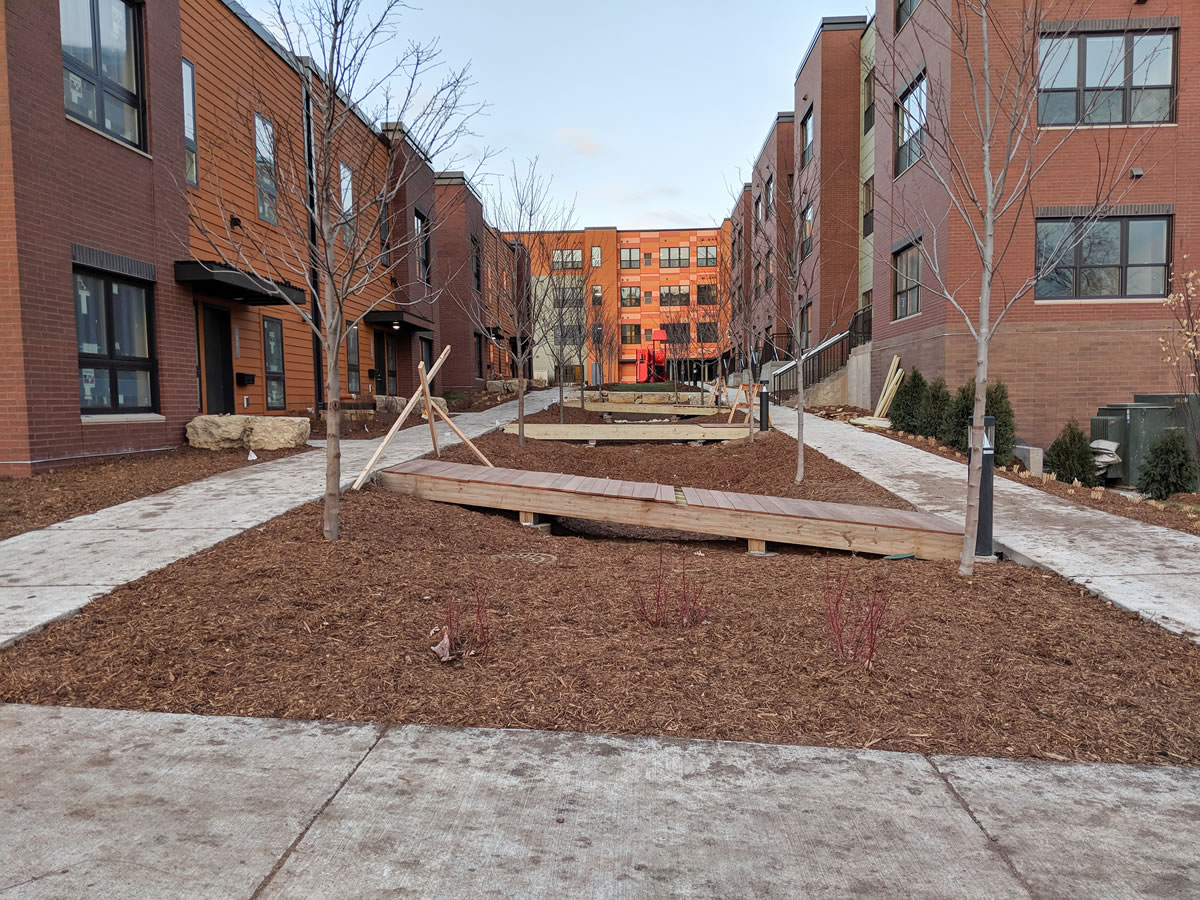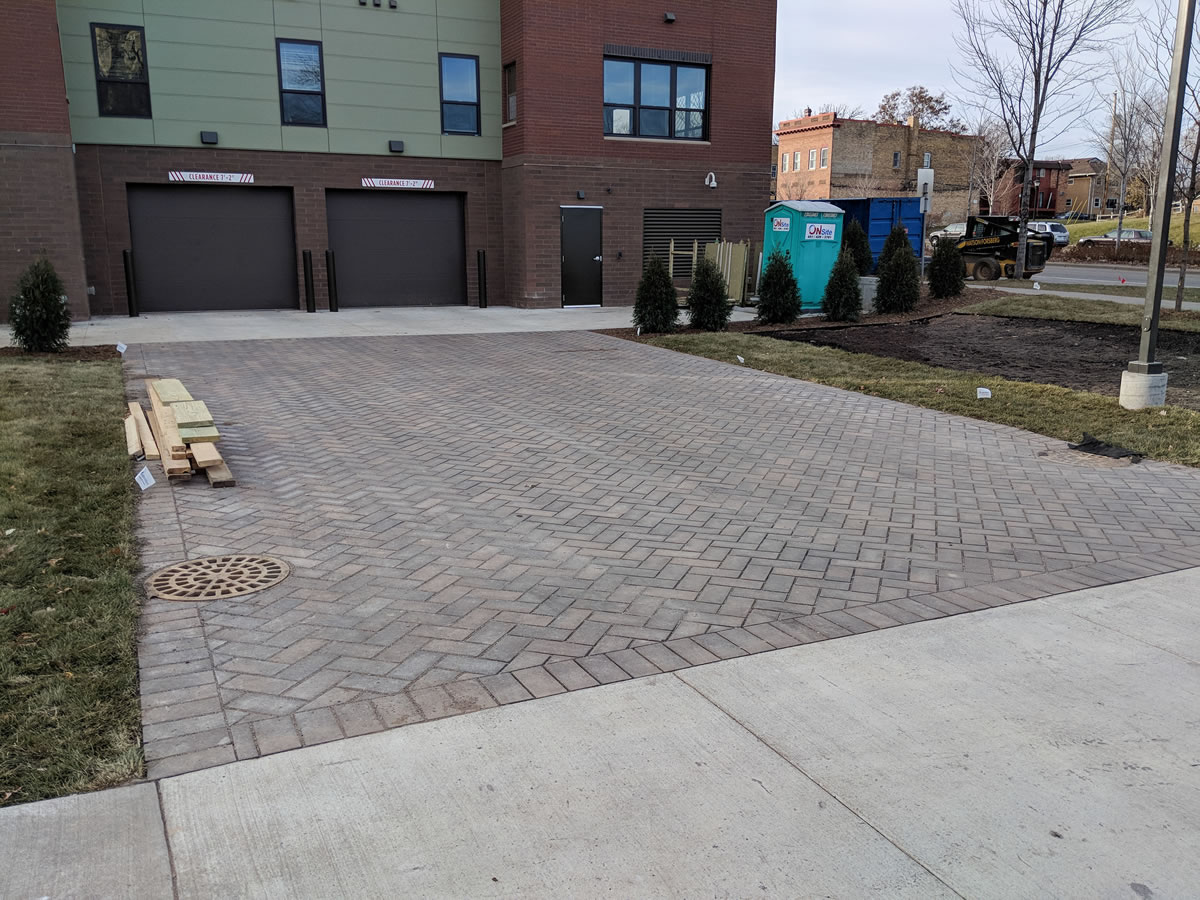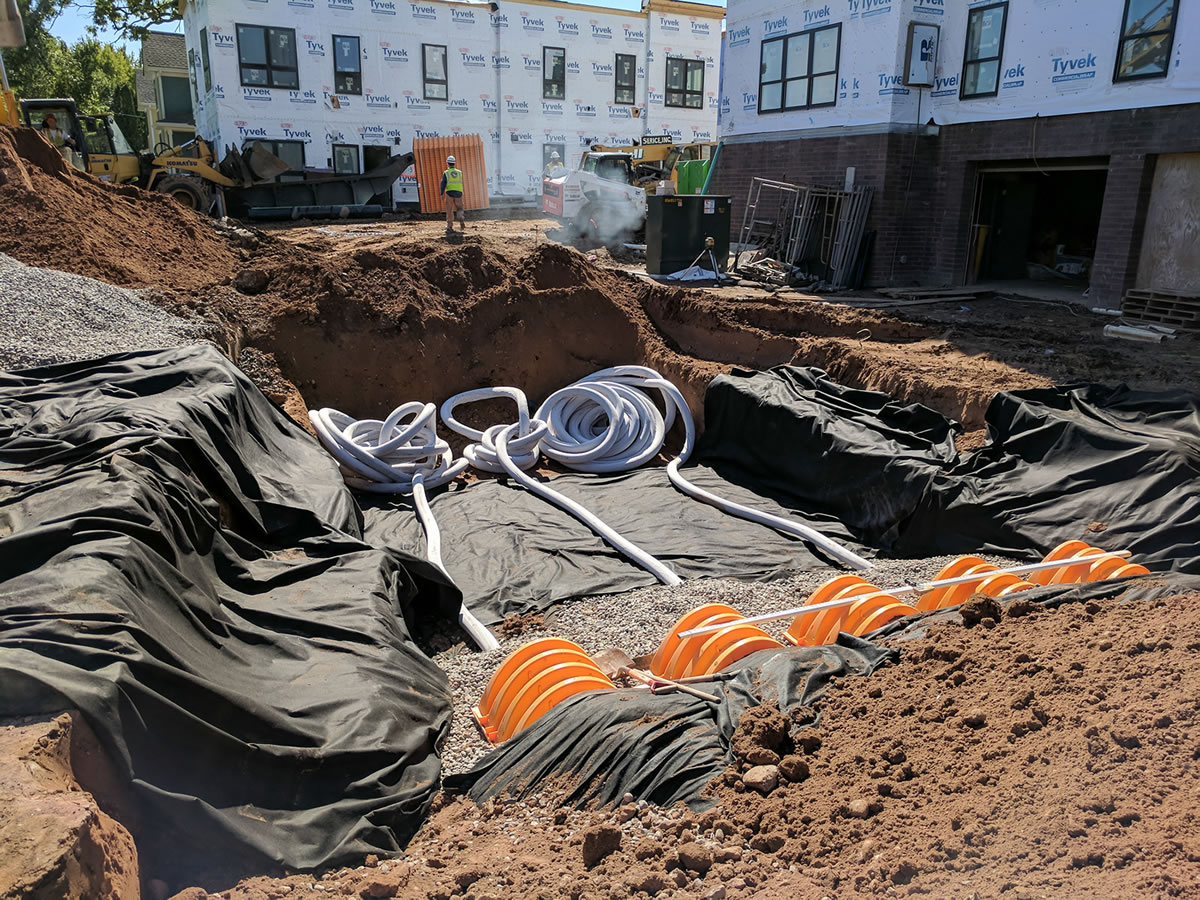News / December 04, 2017
EcoVillage Apartments makes green living affordable in North Minneapolis

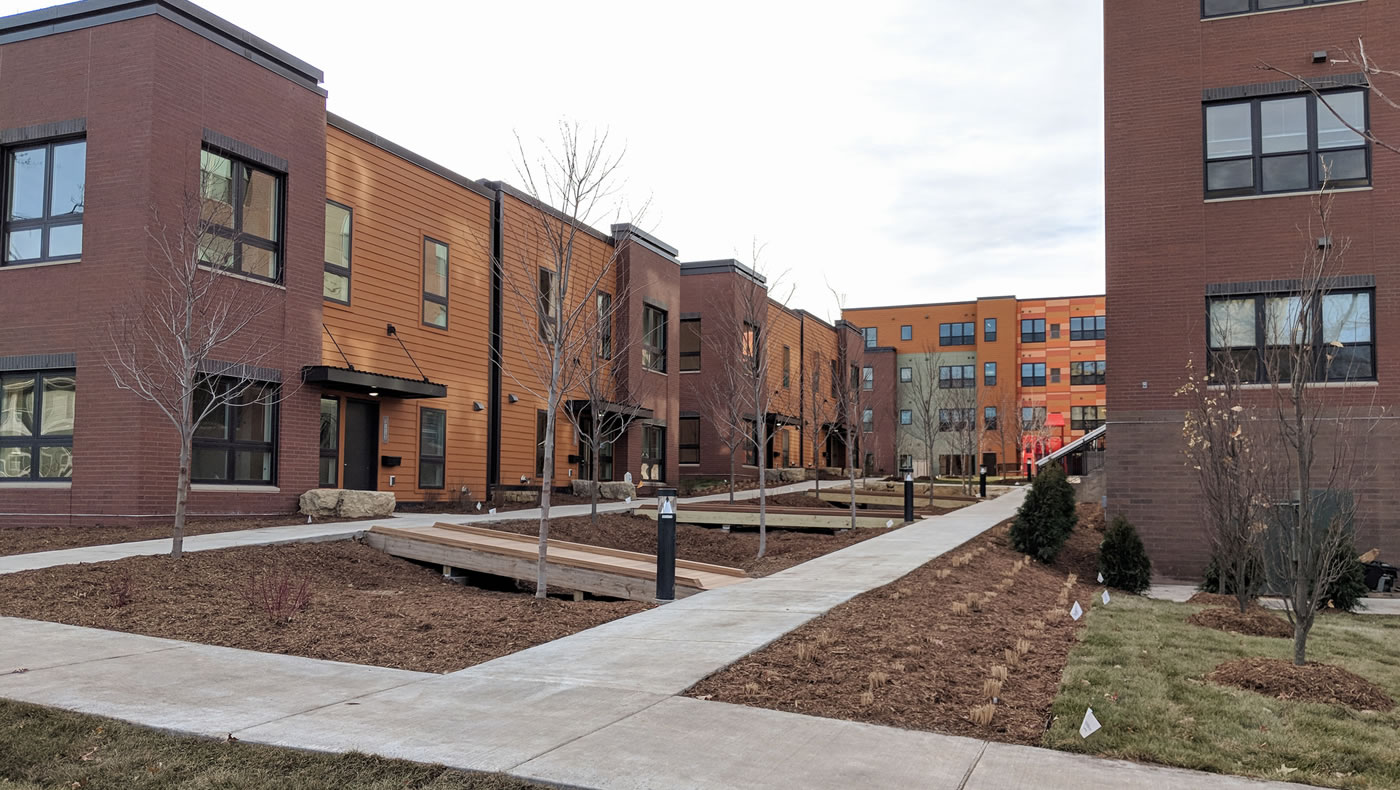
Last month in North Minneapolis, a remarkable new housing complex welcomed its first residents. EcoVillage Apartments offers 75 units of affordable housing designed with green building technologies and eco-friendly landscaping. A Project for Pride in Living development nine years in the making, the new apartment complex anchors a much larger transformation of a once crime-ridden part of the city into a model of sustainable redevelopment.
We at the MWMO are proud to have played a small role in the project, funding a series of features that capture and treat stormwater runoff at the site. But the full story behind Hawthorne EcoVillage is much bigger, and will serve as an inspiration to others.
In 2007, the housing crisis left many parts of Minneapolis struggling, as foreclosures and vacant homes led to increased crime rates. Among the hardest-hit locations was the four-block area near the intersection of Lowry and Lyndale Avenues, in the city’s Hawthorne Neighborhood.
In response to the rapid increase of foreclosures in North Minneapolis, the city had created the Northside Home Fund, a strategy to focus resources into targeted areas for redevelopment. To help utilize this fund, the Hawthorne Neighborhood Council identified a four-block area as a priority for cluster redevelopment, to be dubbed the Hawthorne EcoVillage.
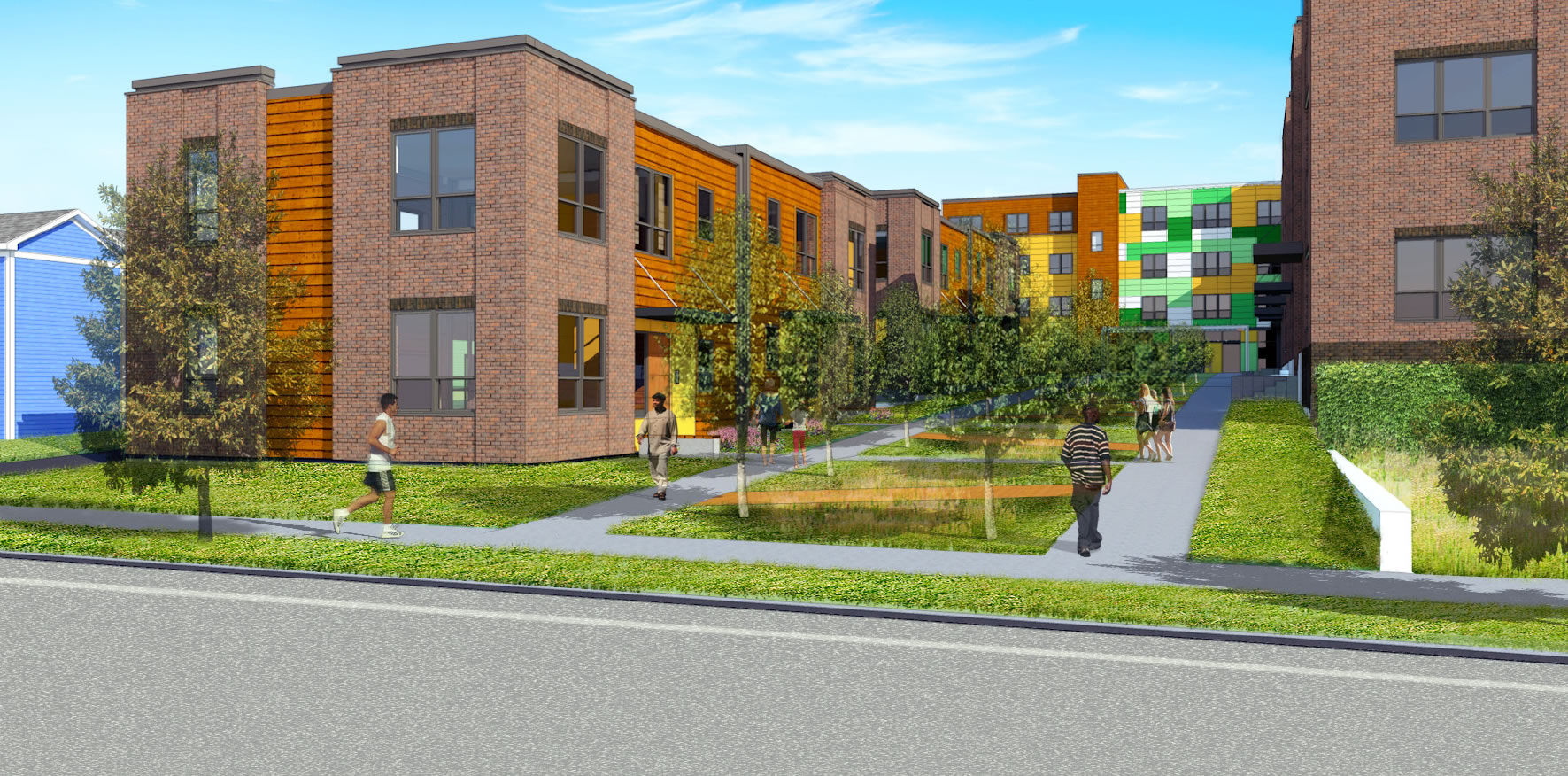
Multiple city departments worked together with developers, residents, and funders to be creative with resources in this designated area. The Hawthorne EcoVillage created a long-term ambitious vision for redevelopment, which included energy efficiency, a variety of housing, and overall sustainability.
As part of the visioning process, the MWMO funded and participated in a stormwater master plan for the four-block area. Engineers evaluated existing conditions and compared them with the proposed development master plan. Calculations were done to estimate how much stormwater would be generated from the development, and ideas were proposed to help manage that runoff, cleaning it before it enters the stormsewer and heads to the Mississippi River.
Little by little, Hawthorne EcoVillage began to emerge. Properties were acquired and cleaned up, homes were rehabilitated, and gardens were installed. New, energy-efficient homes were built using sustainable materials, providing exciting new affordable home-ownership opportunities for moderate-income households. The project’s ambitious sustainability goals were being met: greater energy independence, protection of water, creating biodiverse landscapes, and supporting the health and well-being of residents.
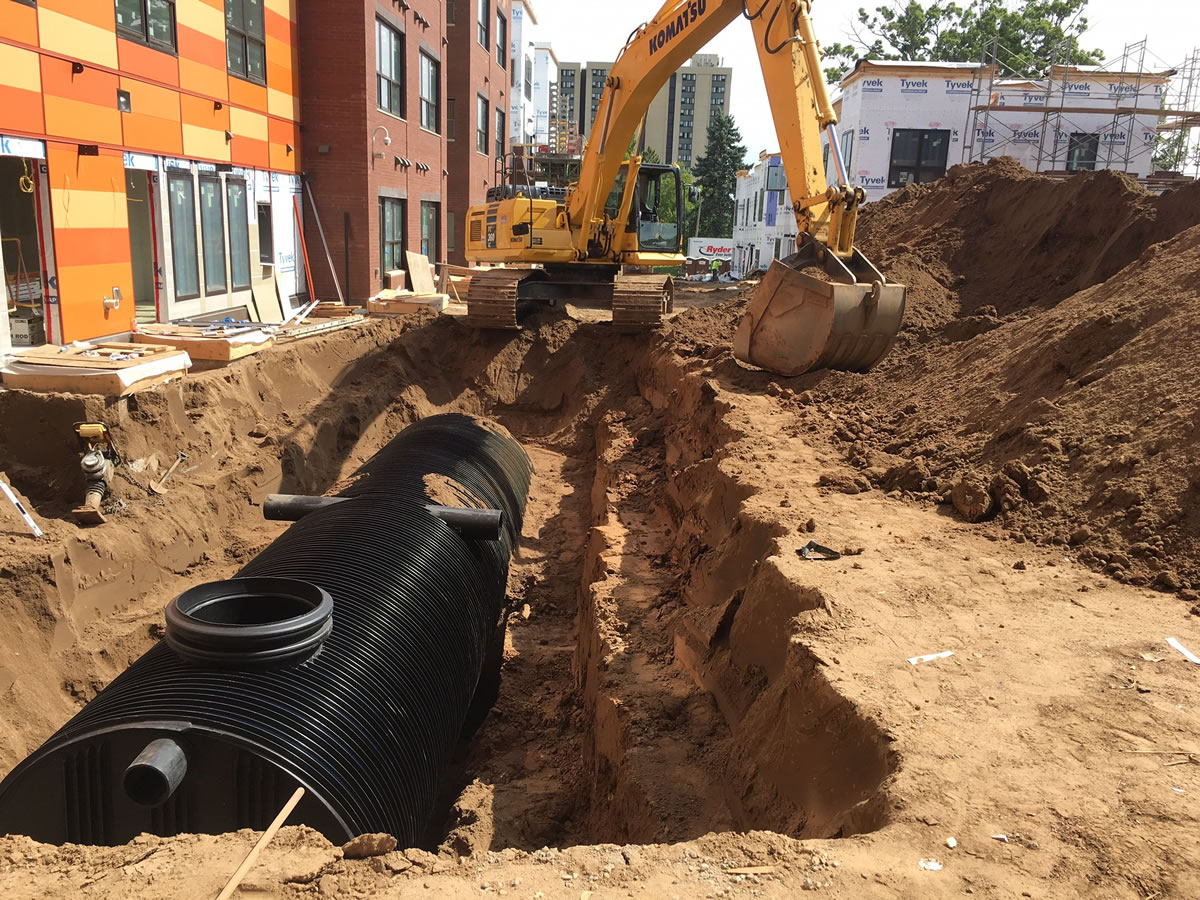
Stormwater at EcoVillage Apartments
In 2015, Project for Pride in Living was ready to implement the EcoVillage Apartments, the anchor development providing quality affordable homes to 75 households. Sustainable building and landscape features in the plans included water-efficient landscaping, rain gardens, and underground storage to manage stormwater on the 1.28-acre site. Over the past two years, MWMO staff have been working with PPL’s designers to hone in on maximizing the potential for stormwater management for the site. This summer, we got to see these management features constructed.
Stormwater is managed in a “treatment train” approach at the apartments. Roof runoff is collected in a small tank buried beneath the playground, where it can be reused to irrigate the site. The water can overflow through a filtration system (the orange pipes), into a linear rain garden to be cleaned, and trees and native plants can use the stormwater. At the end of the rain garden, the water enters another larger filtration system before it finally leaves the site and enters the stormsewer system. A permeable paver area, part of a gathering space and driveway, adds stormwater treatment as well as improved aesthetics to the paved areas of the site.
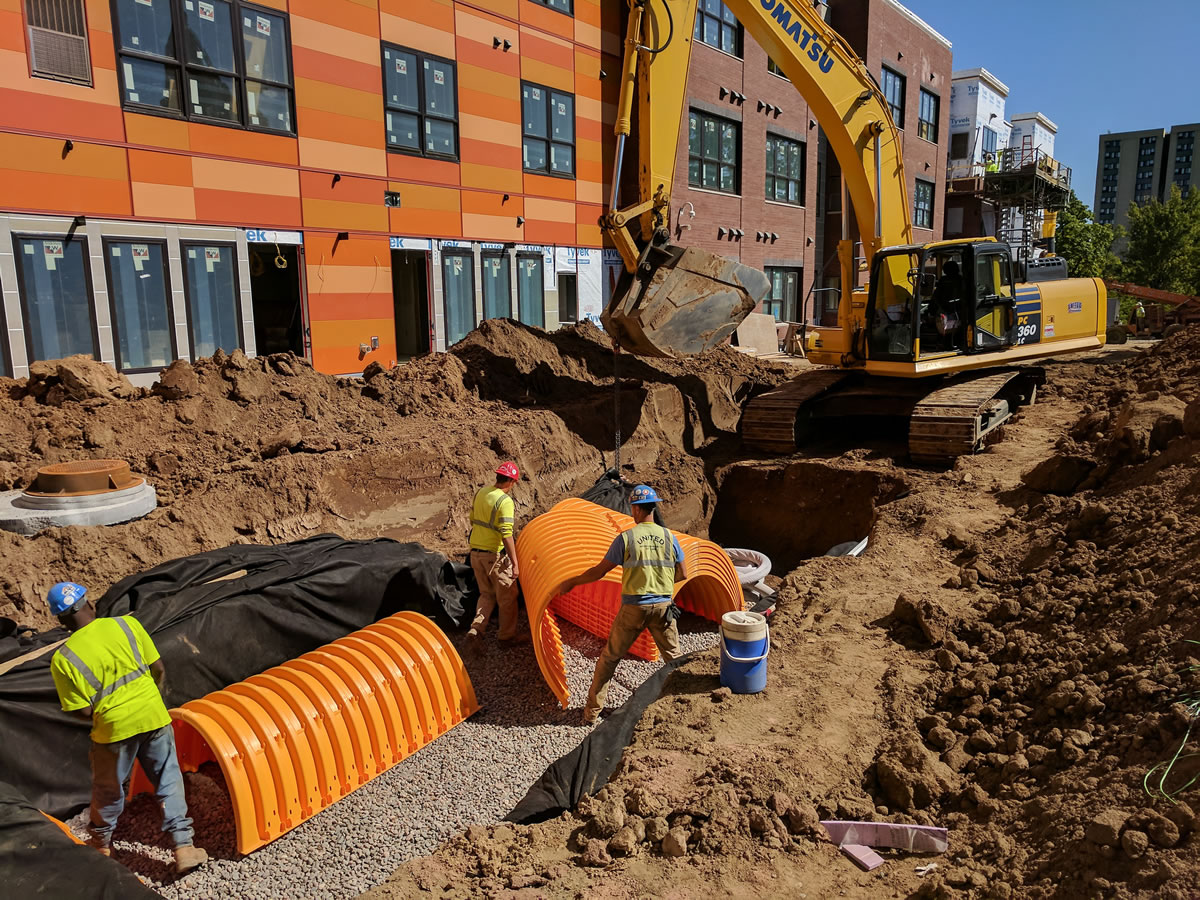
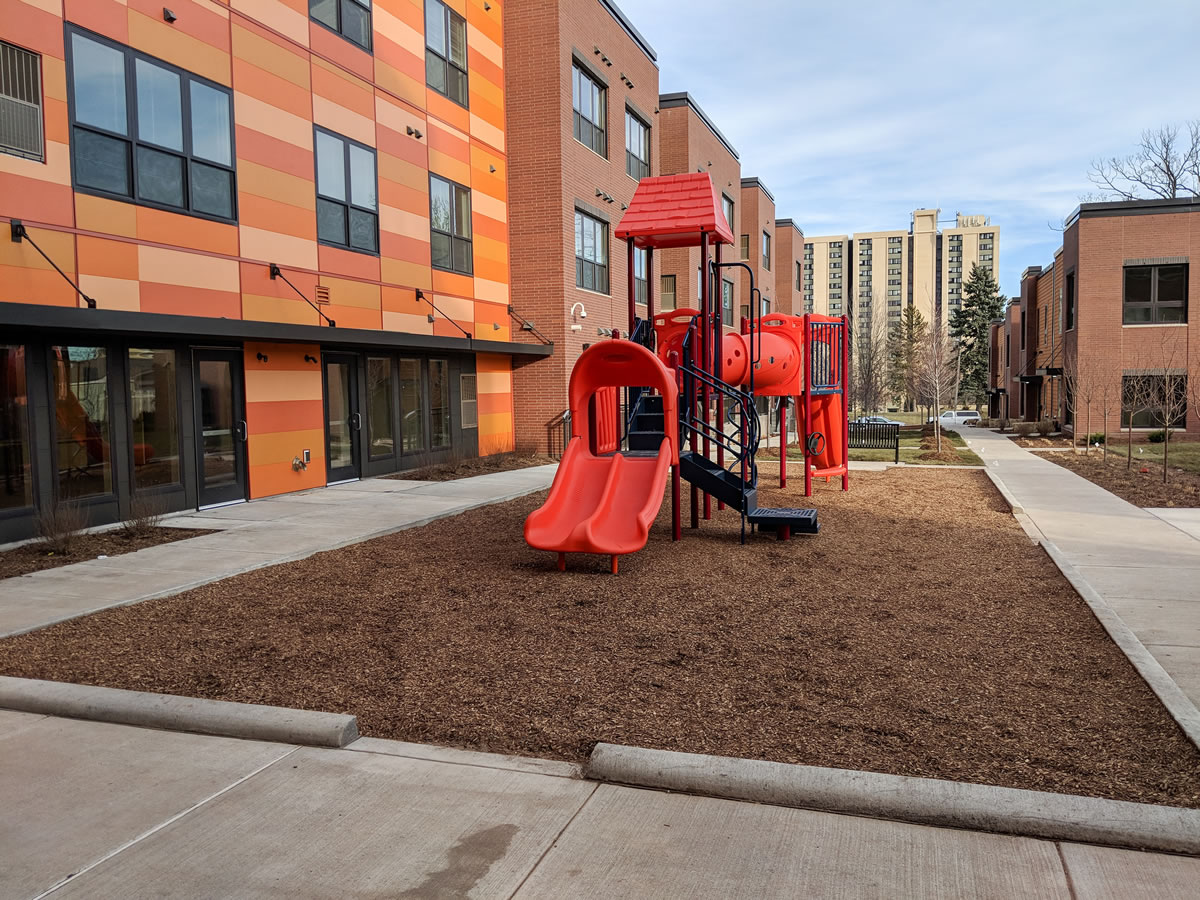
The design of the site and its stormwater components provide an opportunity for residents to interact with and learn from the features. The prominent rain garden is a unifying feature between the townhome units and the apartments, and will provide a beautiful space for residents to gather. I personally like the juxtaposition of the contemporary building materials and angular walkways with the native plant material. I can’t wait to see the plants grow and thrive, and see residents using this space as their own.
Redevelopment projects like this one often take years to complete. From inception to planning, design into construction, there are many layers of information, regulations, and financing to line up. The MWMO tries to work with partners early on during project planning to see if we might be able to add water quality components — and subsequent funding — to their project. Hawthorne EcoVillage is one such redevelopment.
Years of planning and building strong relationships have resulted in a successful, environmentally friendly redevelopment in North Minneapolis. We are happy to have supported the project in going above and beyond the normal requirements to improve the quality of stormwater that drains to the Mississippi River. We look forward to finding opportunities to share information about protecting water quality with the new residents of EcoVillage Apartments.
